Cholla Photos: See These Amazing Desert Cacti
Brilliant view
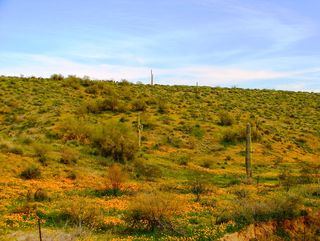
Spring has once again returned to the deserts of North America, and with her return, so too have the amazing colorful blooms of desert wildflowers and cacti. Because of the winter rains, this land, so commonly dominated by the browns, blacks and grays of stone, is magnificently transformed and once again carpeted for a short time with a kaleidoscope of yellows, blues, reds and orange. Shown here, an explosion of California poppies, Eschscholzia californica, blanket a desert hillside in the Sonoran Desert.
Colorful contributors
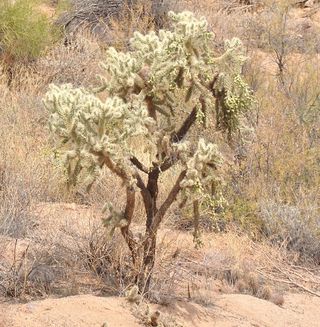
Some of the great contributors to this annual spring spectacle of color are the group of cacti commonly known as cholla (choy-ya). Members of the genus Cylindropuntia, the 20 species of cholla cacti are commonly found in all the deserts of North America. They tend to be shrubby cacti, but some species grow as ground creepers or even as small trees. Their stems are made up of segmented joints. Their fleshy stems are in reality modified branches that serve as locations for storing water, carrying out photosynthesis and producing flowers. A chain-fruit cholla, Opuntia fulgida, is shown here.
Variety of sizes
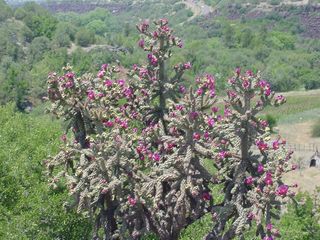
Cholla vary in size from a few feet to as tall as 15 feet (4.5 m). They grow best in well-drained soils and require plenty of direct sunshine. They can be found growing in the low desert regions, desert foothills and up the sides of mountains to the forest edge. The beautiful blooming cholla shown here grows in the White Mountains of Arizona at an elevation of 5,040 feet (1,536 m) near historic Fort Apache.
Spiny leaves
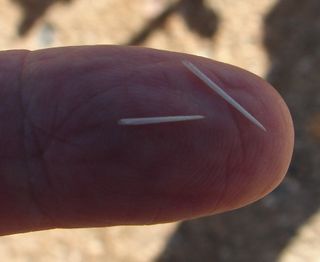
Like most cacti, cholla have modified leaves that now grow as sharp spines. In most species of cholla, these spines are covered with a papery sheath that helps cool the plant from the extreme summer heat. These sheaths can be bright and colorful but are most often somewhat creamy in color.
Modifications
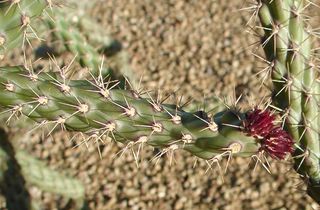
Common with all species of cactus, cholla tubular segments are covered with small, wart-like structures known as areoles. Areoles are modified branches and are the location on the cholla from which spines, glochids (small, hairlike barbed bristles), small leaves and flowers grow. Areoles and all the structures that grow from them can be seen in this photo of a beautiful blooming cholla.
Wooden bones
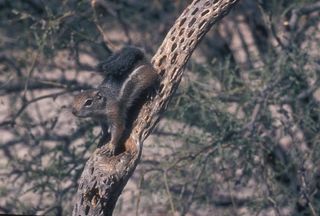
Cholla plants have a woody skeleton beneath their green, fleshy skin. This woody skeleton is what allows some species of cholla to grow so tall. Once the plant dies and the fleshy skin decays, the cholla wood, which is hollow with regularly spaced holes, is used by many desert animals. Shown here, a Harris’s antelope squirrel, Ammospermophilus harrisii, uses a cholla skeleton as a lookout post for potential predators.
Bright blooms
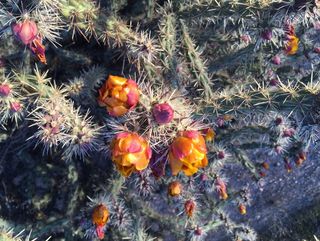
Cholla flowers bloom in a wide variety of colors. Some are shades of red and pink; some are shades of green and yellow. Some are indiscreet, while others are bold and spectacular. The coppery orange blooms on the cholla shown above add to the splendid bloom of color during the spring across the North American deserts.
Sign up for the Live Science daily newsletter now
Get the world’s most fascinating discoveries delivered straight to your inbox.
Teddy bears
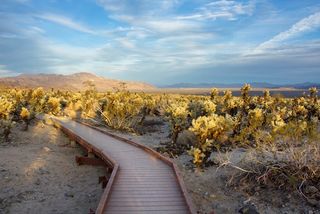
Cholla reproduce most commonly by clonal propagation. The many joints of their segmented stems are loosely attached and easily break off and fall to the ground. The stem segment lying on the ground will produce roots, and soon a new, rooted cholla begins to grow. Sometimes, this type of reproduction can create what botanists call a cholla forest where hundreds of plants grow in close proximity. Shown here is the teddy bear cholla, Cylindropuntia bigelovii, a forest located in Joshua Tree National Park.
Silver Cholla
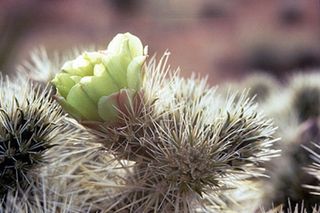
There are many spectacular species of cholla cacti. Shown here is the beautiful blooming Silver Cholla, Opuntia echinocarpa. It's sometimes also called Gold Cholla because the spines covering sheaths of this cholla species vary in shades of white and yellow. This is a common cholla of the Western Sonoran and Mojave Deserts and can grow up to 5 feet in height.
Staghorn Cholla
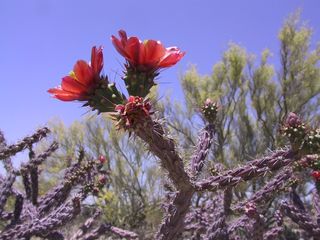
This beautifully blooming Staghorn Cholla, Opuntia versicolor, gets its name from the many forked branches that early botanists thought resembled the antlers of a deer. The green, fleshy fruits of the Staghorn Cholla sometimes grow in long, hanging chains. This is a common cholla throughout the Sonoran Desert deep into Mexico. It tends to grow at elevations from 1,000 - 4,000 feet (305 - 1,219 m).
Christmas Cholla
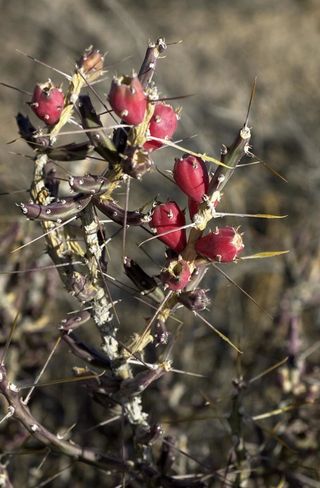
The branches of the Christmas Cholla, Opuntia leptocaulis, are the most slender of all cholla species. The bright-red, grape-sized fruits become ripe during late fall and early winter, giving rise to the species' common name. Christmas Cholla are most commonly found in the Chihuahuan Desert, but they do appear in the lower regions of the Sonoran Desert. Christmas Cholla grow best in elevations ranging from 200 - 5,000 feet. (61 - 1,524 m).
